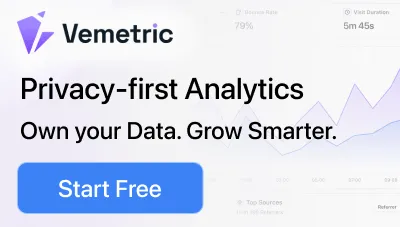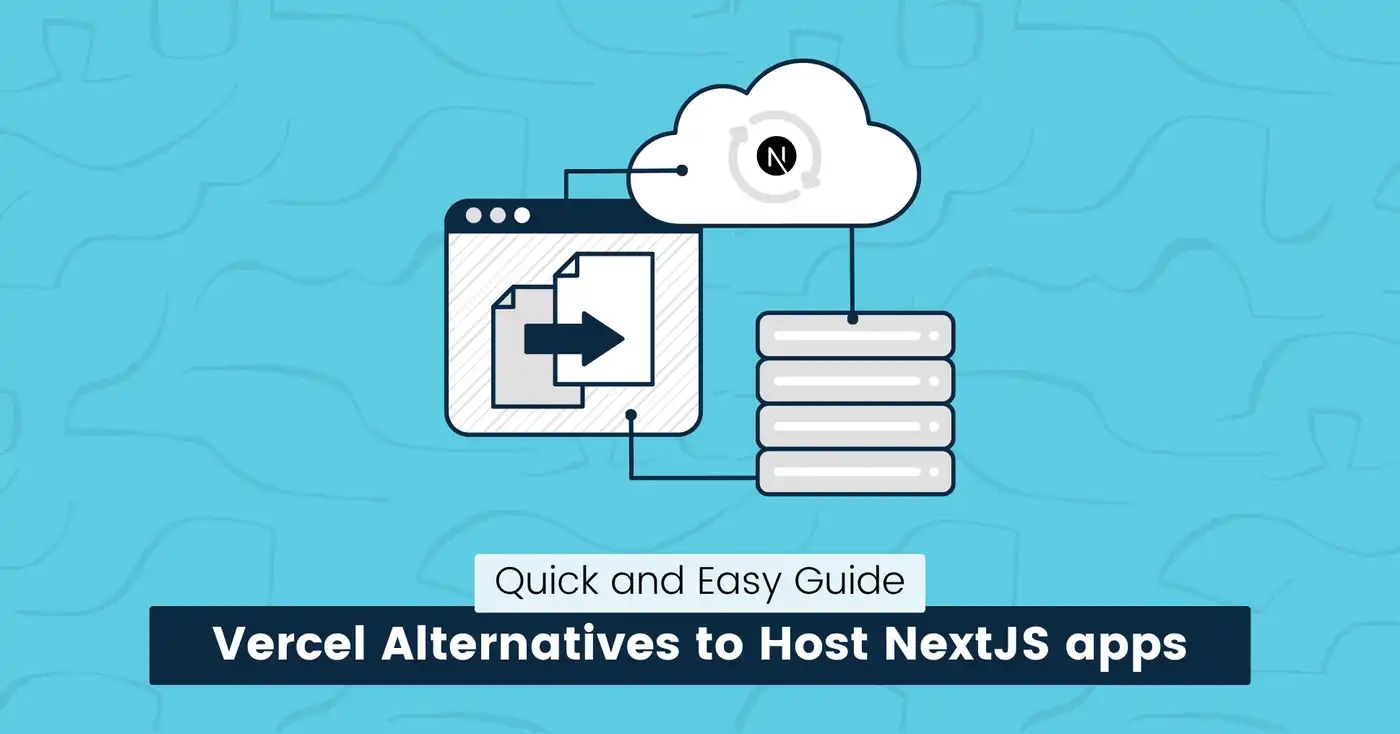
Top 6 Vercel Alternatives to Host NextJS apps in 2025
Vercel is the most popular cloud platform for hosting Next.js applications.
For many developers, it is the default choice because it makes deploying your app incredibly simple and works perfectly with the framework’s latest features.
It handles everything from build processes to global content delivery, allowing you to go from code to a live website with minimal effort.
However, as your app gains popularity, you may encounter some issues.
Hosting bills can become expensive more quickly than you expect, especially for high-traffic sites or applications with complex backend functions.
You may also feel limited by its restrictive environment, unable to customize server settings, implement specific architectures, or utilize the features you desire.
The good news is that there are other excellent options available for you to choose from. Several other hosting platforms offer a similar, smooth experience for deploying Next.js apps for a lower price, with more flexible options that give you greater control.
This guide compares the top Vercel alternatives, breaking down their pricing, features, and flexibility to help you choose the best hosting solution for your specific needs and budget.
Let’s get started.
6 Best Vercel Alternatives for Developers
Here are the top Vercel alternatives, including their standout features, pricing, and ideal use cases, to help you quickly evaluate your options.
Netlify
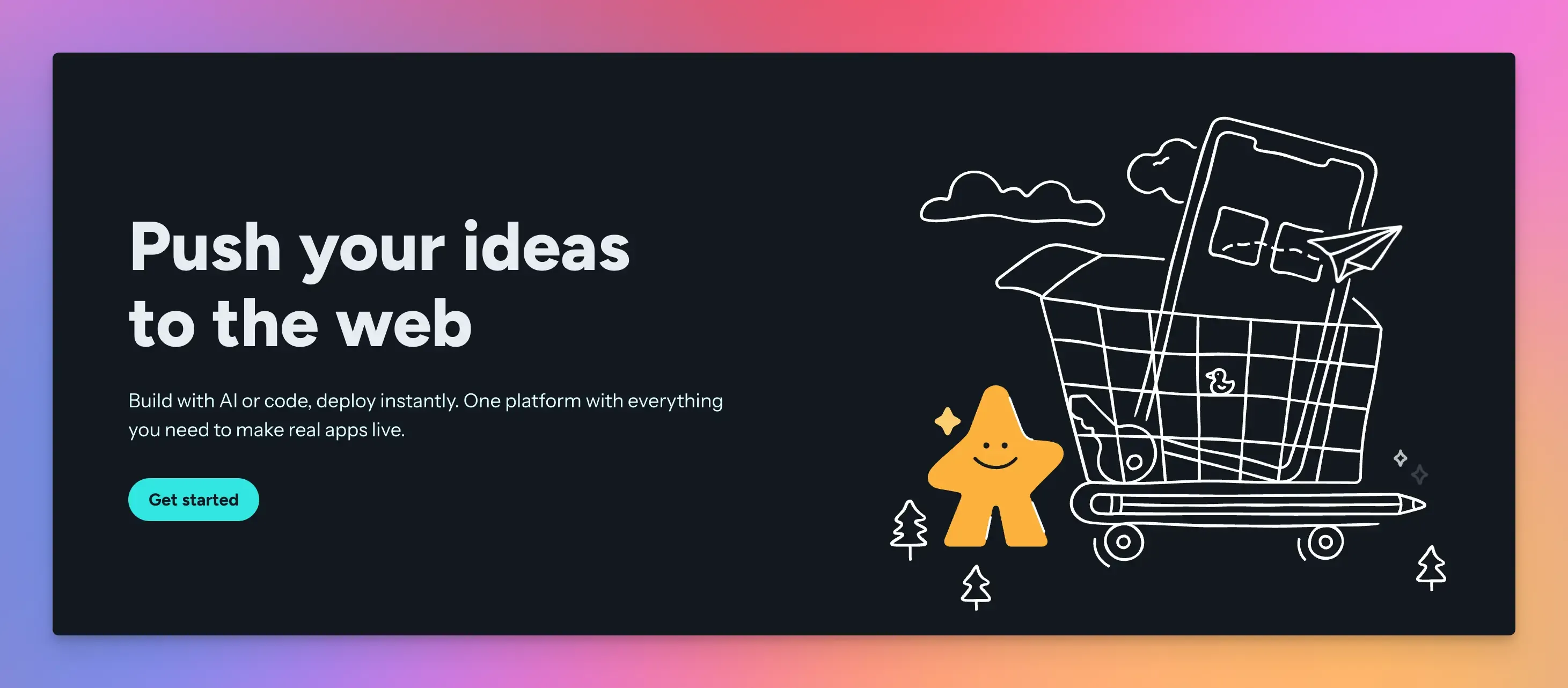
Netlify is a cloud platform that helps developers build, deploy, and host modern websites and web apps.
It is a strong competitor to Vercel in the Next.js hosting domain, providing a reliable platform with a focus on developer experience.
It started as a popular platform for static sites and Jamstack-style apps, but has since expanded to include more dynamic features, such as serverless functions, edge logic, Git integrations, previews, analytics, and more.
Key Features:
- Git-based CI/CD Pipeline: It connects directly to your Git repository and automatically builds and deploys your site to a global content delivery network (CDN) every time you push code, with shareable preview URLs for pull requests or branch changes. The platform also features instant cache invalidation, ensuring modifications take effect immediately.
- Serverless and Edge Functions: Netlify allows you to run backend code without managing servers. It also offers edge functions for lower latency and more dynamic behavior.
- Custom domains with SSL: You can bring your own domain or purchase one. Netlify automatically manages SSL certificates to make your site secure.
- AI Gateway: This feature enables you to utilize popular AI models, such as OpenAI and Anthropic, directly from your code without managing separate API keys, while also tracking usage.
- Split Testing: Deploy and test multiple branches, and control which users see which version, without compromising download performance or requiring the installation of any third-party libraries.
- One-Click Rollbacks: If a new deployment introduces a bug, you can instantly go back to any previous version with a single click.
Best for: JAMstack sites, quick prototyping, frontend-focused projects.
Pricing:
- Free plan available.
- Personal plan starts from $9 per month.
Render
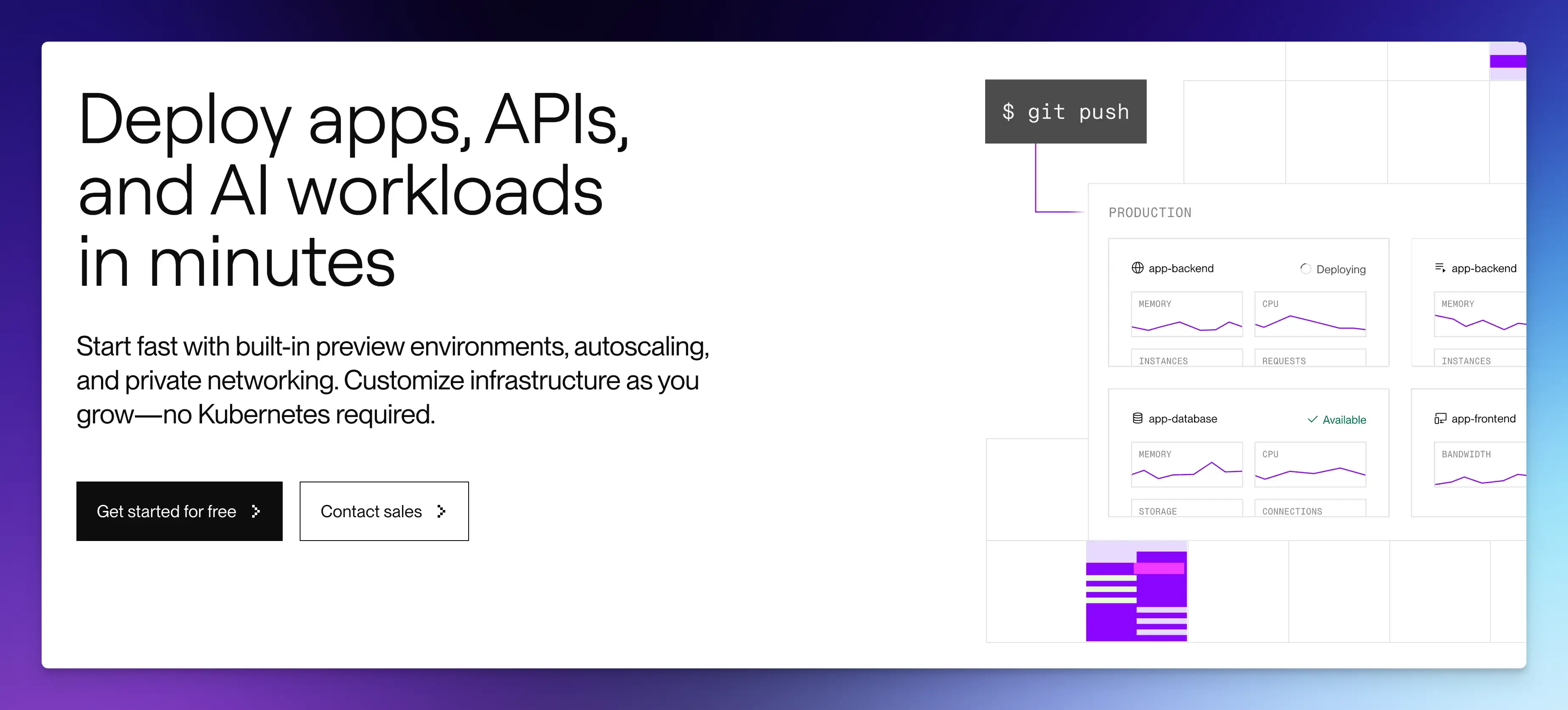
Render is a modern cloud application platform that enables developers to build, deploy, and scale applications without managing complex infrastructure.
It’s known for its developer-friendly experience, offering powerful capabilities for a wide range of applications, from static sites to backend services and databases.
Key Features:
- Diverse Service Types: You can deploy a wide array of projects, including static sites, web services (using Node.js, Python, Go, Rust, Ruby, Elixir, or custom Docker containers), background workers, fully managed PostgreSQL databases, and Redis-compatible key value stores. This allows you to host your entire tech stack in one place.
- Powerful Scalability: Render supports horizontal autoscaling to manage a larger number of simultaneous tasks, such as sudden spikes in traffic or incoming requests, as well as vertical scaling for service computing resources like RAM and CPU.
- Developer Experience: The platform emphasizes a smooth workflow with features such as automatic continuous deployments from your Git repository and instant rollbacks in case of a failed deployment. Render’s preview environments automatically create a fresh copy of your production environment for every pull request so that you can test your changes.
- Platform Capabilities: Other notable features include zero-downtime deployments, built-in DDoS protection, ****private networking, service discovery, and detailed monitoring with log streams and service metrics.
Best suited for: Full-stack applications and projects with background jobs or scheduled tasks.
Pricing:
- Free tier available for static sites and small services.
- Usage-based pricing with predictable plans starting from $19 /user per month.
snappify will help you to create
stunning presentations and videos.
AWS Amplify
AWS Amplify is Amazon’s solution to help developers build, deploy, and manage full-stack web and mobile applications.
Amplify provides a set of tools and services that simplify the process of connecting your frontend to powerful, scalable cloud services on AWS.
You can use it to handle backend tasks such as authentication, APIs (GraphQL or REST), file storage, real-time data, and hosting, as well as continuous deployment.
Key Features:
- Authentication: Implement secure authentication flows and access control with built-in support for multi-factor authentication and social identity providers, such as Google and Facebook, all powered by Amazon Cognito.
- APIs and Data: Amplify can automatically generate the necessary backend infrastructure and supports real-time data subscriptions through AppSync.
- Development Workflow Tools: It includes Amplify Libraries for integrating cloud capabilities into your app, Amplify CLI for configuring and managing your app’s backend, and Amplify Studio for designing backends and UIs.
- Hosting: Amplify Hosting offers a fully managed CI/CD service. Connect your Git repository, and Amplify will automatically build, deploy, and host your static and server-side rendered apps on a global CDN. It includes features like pull request previews and password-protected branches.
Best for: Full-stack apps deeply integrated with the AWS ecosystem, enterprise applications.
Pricing:
- New AWS clients get a free tier for the first 12 months (1,000 build minutes per month). Beyond that, build time is $0.01 per minute.
Heroku
Heroku is a fully managed Platform as a Service (PaaS) that abstracts away the underlying infrastructure and server maintenance so you can focus on your code.
The platform supports a wide range of popular programming languages, including Node.js, Ruby, Java, PHP, Python, Go, Scala, and Clojure.
Key Features:
- Heroku Runtime: It runs your code inside dynos, which are smart, isolated containers that execute on a fully managed, reliable environment. You choose how many dynos, what type (performance, memory, or CPU), and scale up or down as needed.
- Integrated Data Services: Heroku provides fully managed data services integrated into the platform. This includes Heroku Postgres, a managed SQL database service, and Heroku Redis (a key-value store). These services include powerful features like high availability, continuous protection, and easy rollbacks.
- Powerful Ecosystem: You can extend your app’s functionality with add-ons, which are pre-integrated third-party cloud services for logging, monitoring, payments, and more. The ecosystem also includes buildpacks for customizing your app stack and buttons for one-click deployment of standard components.
- Developer Experience: You can deploy directly from Git or GitHub and manage your app through a web-based dashboard.
Best for: Full-stack and AI applications, backend deployments, and microservices.
Pricing:
- A dyno-based pricing model starting at $5 per month.
Firebase App Hosting
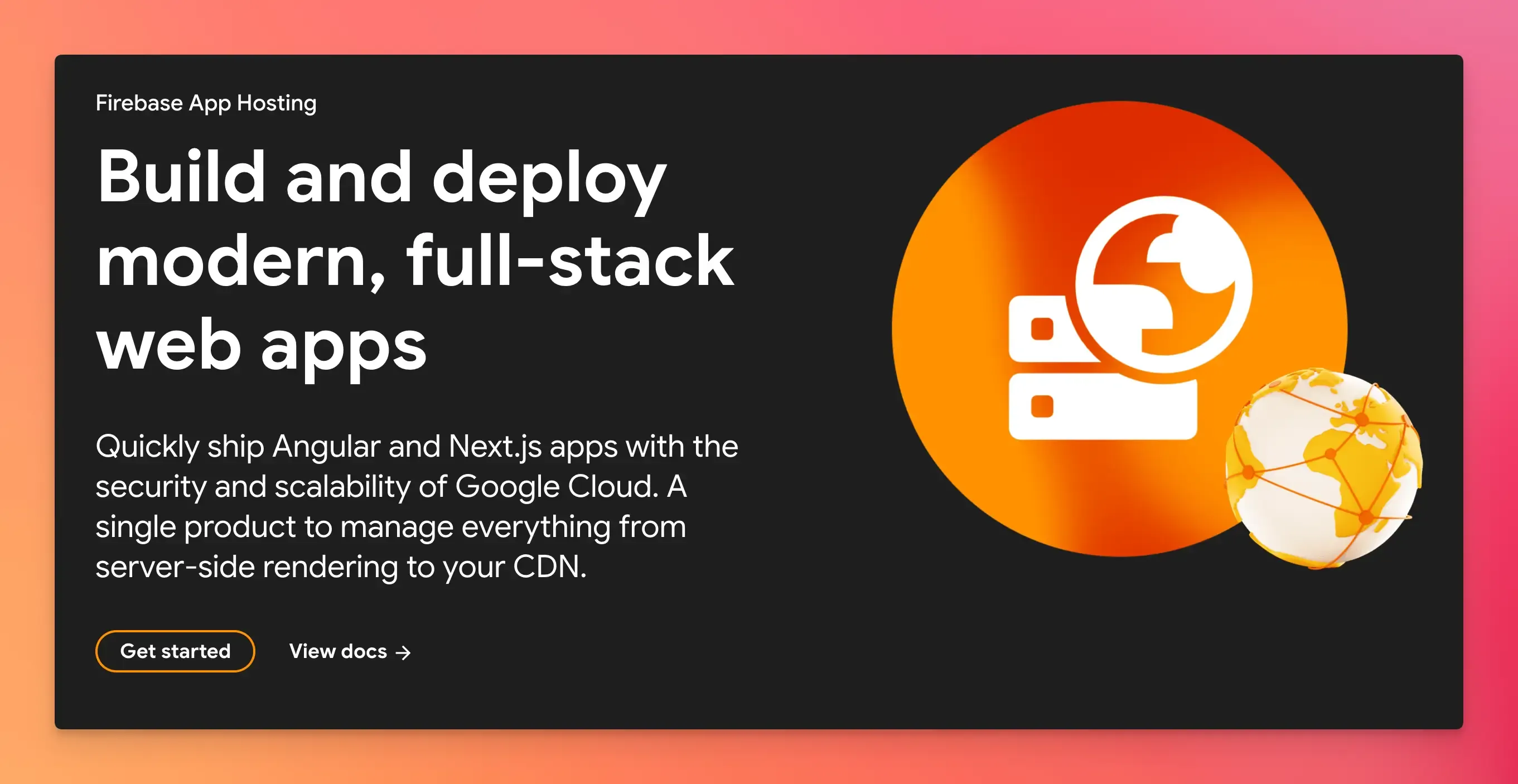
Firebase App Hosting is a specialized service from Google for deploying and managing full-stack web applications.
It provides a complete, serverless solution that handles everything from the build process and server-side rendering to global content delivery.
When you push code to your connected GitHub repository, App Hosting automatically uses Cloud Build to create your application, deploys the dynamic content to Cloud Run, and serves cached content through a global Cloud CDN.
Key Features:
- Support for Popular Frameworks: App Hosting has built-in support for Next.js and Angular. It automatically detects your framework and configures the underlying infrastructure based on your source code.
- Automatic CI/CD with GitHub integration: Deploying a new version of your app is as straightforward as pushing a commit to your designated “live branch”. App Hosting automatically triggers a reproducible cloud build and rollout, and you can track every deployment back to its exact git commit.
- Google Cloud Services: Your app runs on enterprise-grade infrastructure. Cloud Run provides automatic scaling, meaning your app can handle traffic spikes and scale down to zero when idle, effectively managing costs. The integrated Cloud CDN delivers fast load times for users worldwide. For security, it integrates with Cloud Secret Manager for safe handling of API keys and sensitive data.
- Full-Stack Support: App Hosting is a complete full-stack solution that includes static site generation, client-side rendering, and server-side rendering, often within the same app. It also includes features like streaming support to help you maintain fast initial load times when integrating generative AI features powered by models like Gemini.
Best for: Apps leveraging Google’s ecosystem, real-time applications.
Pricing:
- Firebase App Hosting requires a project on the Blaze pay-as-you-go pricing plan. You receive 10 GiB of free outgoing bandwidth per month. Beyond that, cached data transfer costs $0.15/GiB and uncached data transfer costs $0.20/GiB.
DigitalOcean App Platform
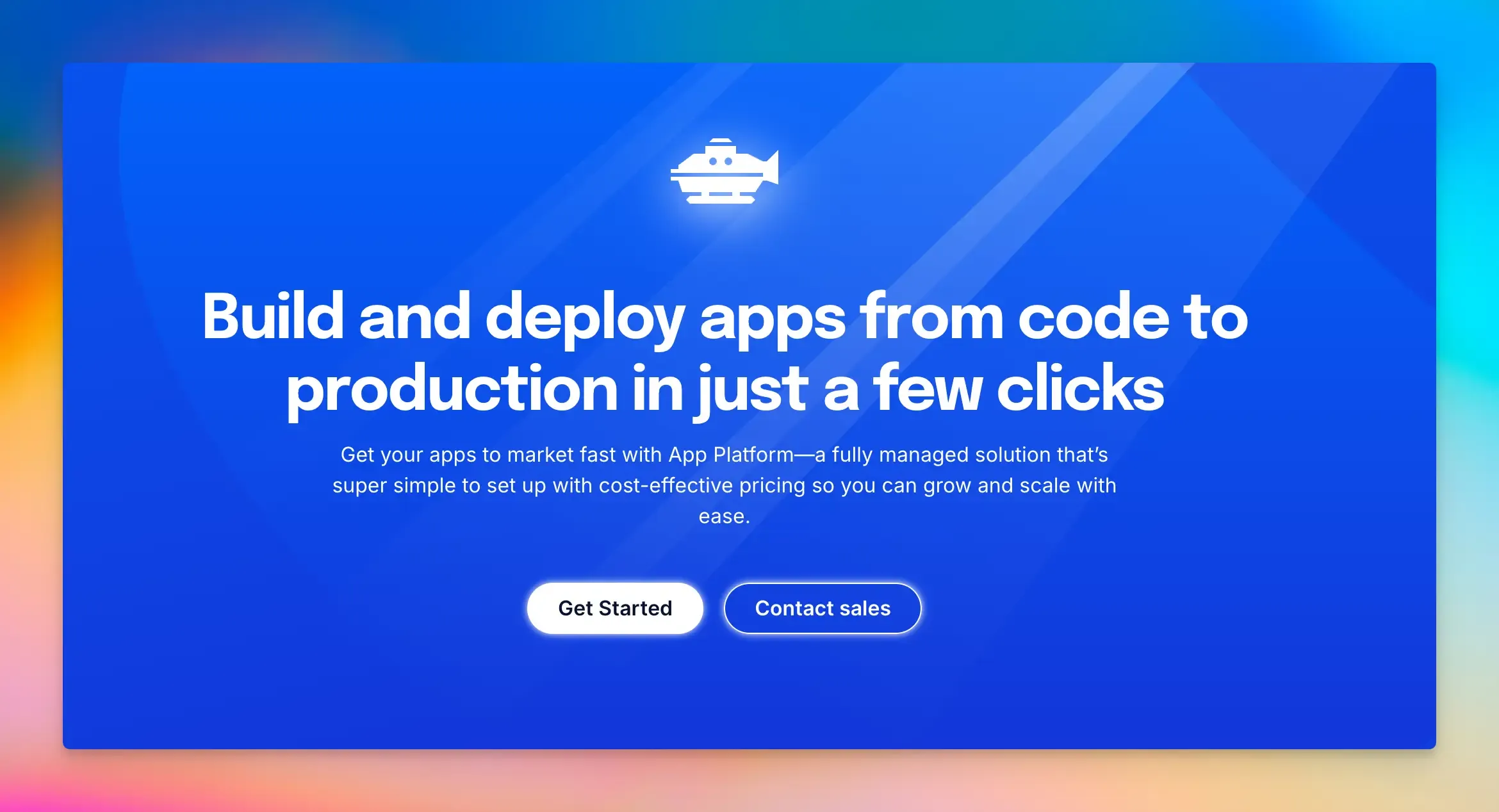
DigitalOcean App Platform is a fully managed PaaS that allows you to publish code directly from your Git repository to DigitalOcean’s servers.
It handles all the infrastructure, app runtimes, and dependencies for you, helping you to roll out features faster without the overhead of managing infrastructure.
Key Features:
- Component-Based Architecture: You can deploy static sites backed by a global CDN, web services for dynamic apps, workers for internal background processes, and jobs for running scheduled commands or scripts.
- Integrated CI/CD and Git-Based Deployment: Connect your GitHub and GitLab repositories, and automatically redeploy your app every time you push code changes. It also creates live deploy previews for every pull request, giving you a unique URL to test changes before merging them.
- Framework Support: It supports popular frameworks, including Node.js (Express.js, Next.js), Python (Django, Flask), PHP (Laravel), Ruby on Rails, and Go. You can also deploy any stack you want by providing a Dockerfile or using an image from Docker Hub, GitHub Container Registry, or DigitalOcean’s own Container Registry.
- Scalability and Security: The platform offers both horizontal scaling and CPU-based autoscaling to handle traffic spikes. For security, it provides automatic HTTPS, managed SSL certificates, DDoS mitigation, and automatic OS patching to keep your apps secure.
Best suited for: Cost-conscious projects that seek a balance of control and convenience.
Pricing:
- Free tier available for three apps with static sites.
- Paid plan starts at $5 per month.
snappify will help you to create
stunning presentations and videos.
Final Words
The best platform for your Next.js app depends entirely on your project’s specific requirements.
We’ve listed some of the best Vercel alternatives for various needs, whether you require greater control, deep integration with a specific cloud provider, or a straightforward developer experience.
Carefully consider what matters most for your application’s performance, scalability, and budget to choose the right hosting service for your next project.
FAQs:
Is migrating away from Vercel a difficult process?
For most projects, migration is a straightforward process. Simply connect your repo, configure build settings, set environment variables, and deploy your application. Platforms like Netlify and Render offer a Vercel-like experience, making the switch feel familiar.
Will I lose key Next.js features if I leave Vercel?
You won’t lose them, but some advanced features might require more configuration. For most production apps, the core features work excellently across the major alternatives.
